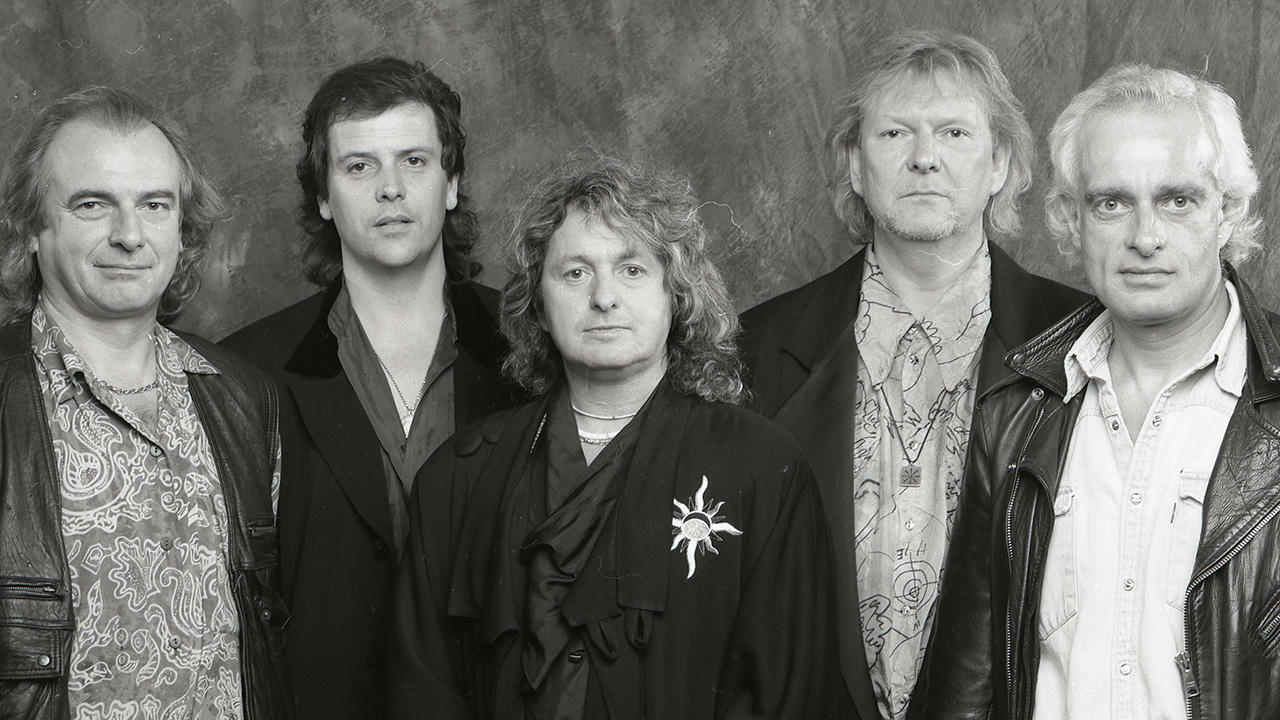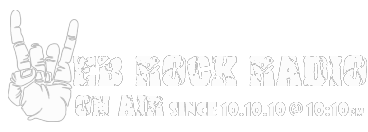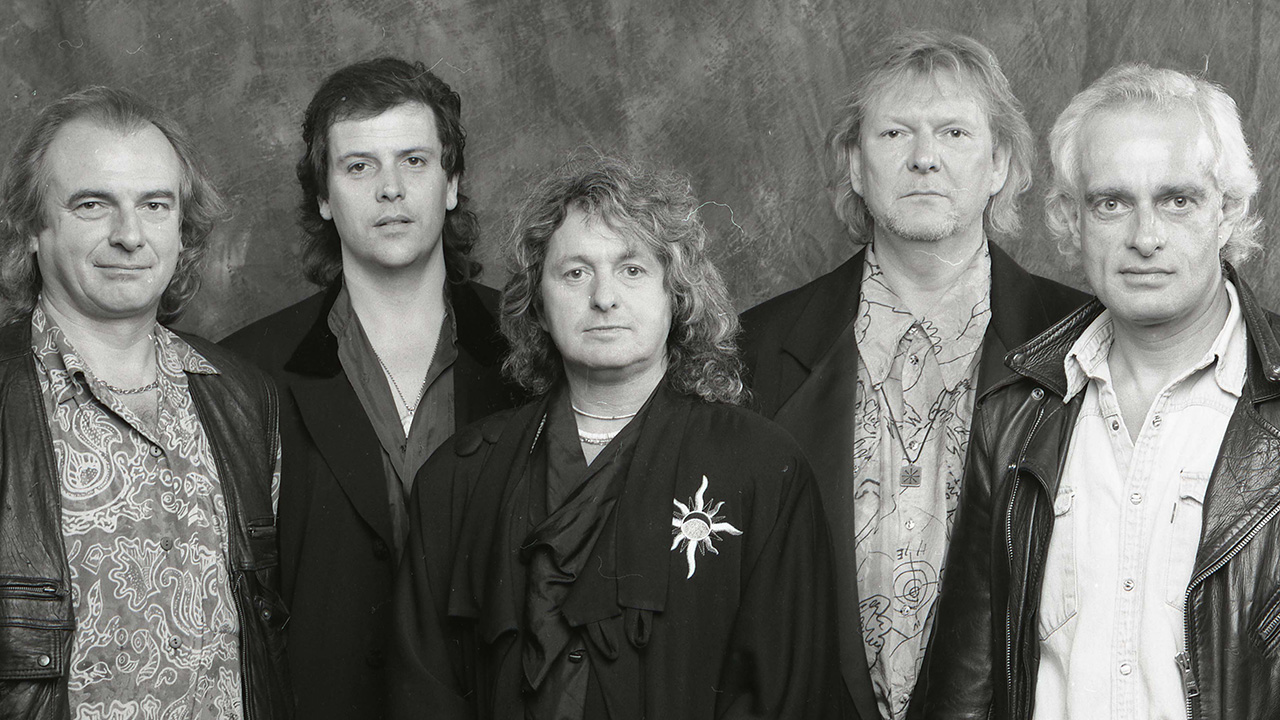“I played it to Jon Anderson and his son. They were both crying – which was either a huge compliment or a disaster!” Is Talk a real Yes album or actually a Trevor Rabin solo work?

With the long-awaited 30th anniversary reissue now available, Yes’s final album featuring Trevor Rabin and Tony Kaye is well overdue for re-evaluation. This is the story of Talk, the band’s innovative and relatively unsung masterpiece, and the tour that followed its original release in 1994.
Yes’s hugely successful Union tour ended in spring 1992, leaving the band – not for the first time – at a crossroads. In truth, there was never much likelihood of the eight-piece Yes continuing, but salvation came in the form of long-term supporter Phil Carson, who now the new Victory label for Japanese conglomerate JVC, and who and badly wanted Yes on his roster.
He also knew what version of the band he wanted, and Trevor Rabin was given a mission. “Phil asked me if I’d take the responsibility for a new Yes album with the 90125 line-up,” he remembers, “giving us pretty much free rein to do what we wanted.”
The guitarist also had a plan for recording. “I’ve always been technically minded and I’d been following the development of digital technology very closely. When I saw there was a possibility to record in a non-linear way, I realised it was the future, so I went for it.”
Rabin had been writing material for some time, including a lengthy period working with Roger Hodgson of Supertramp. “Roger lived in Sacramento, in northern California, so I’d drive up, and we’d write together. At one point, Chris Squire and Alan White came along, and we jammed in the studio for a while. We wrote a few things together, one of which was Walls.
“But there was never the intention that Roger was going to be the singer in Yes. In fact, when Jerry Moss at A&M realised we were writing together, he tried to put together a new version of Supertramp with me in the band! I said no – and Roger wasn’t into it either.”
Rabin realised the key to a successful project was involving Jon Anderson at a much earlier stage than with 90125 and Big Generator, so the two musicians rented space in a beachside motel in California to get to know each other and work on material. Anderson remembers that time fondly. “We’d talk about music all day long and then get on with some recordings,” he recalls. “Slowly but surely, the songs started opening up. I was excited to work one-on-one. Trevor could lay down drums, bass, and guitar, and I’d scribble down some lyrics. It was a very harmonious experience for me.”
Rabin also recognises the importance of that pre-production period: “We wrote some good things, not all of which ended up on the album.” He and the band – Anderson, Squire, Kaye and White – settled in his converted garage studio, Jacaranda (the drums were recorded at A&M Studios in Hollywood). Most of the chosen material had been written by Rabin and Anderson with contributions from Squire, who wrote the riff that carries the powerful and brooding Real Love. However, the technical side remained a challenge, as Rabin remembers.
“We had to find a way of syncing four Apple Macintoshes, as they could only give us four channels each. I also used a 24-track analogue machine just to get some warmth into the sound. We had scientists from the software company rewriting code in the studio at times. That part was quite traumatic… but also amazing.”
It’s a very precise album, sound-wise
Jon Anderson
None of that affected Anderson’s enjoyment of the recording process – he appreciated the simplicity of the set-up while he lived in Rabin’s home. “You wake up, you have breakfast, you go to work. There’s no messing around. You’re there and you try things out.”
Despite his relatively modest contributions to the album – he’s credited only with Hammond organ – Kaye provided most support for Rabin. He recalls: “The band were very dissipated and weren’t there much, but I lived very close to Trevor, so I was at his studio every day. I remember spending a lot of time smoking and drinking beer, waiting for things to happen. But it was exciting watching the more involved tracks build up.”
The 16-minute Endless Dream – which seems to have captured the imagination of many fans – was created by Rabin, who remembers playing it to Anderson for the first time. “I put it down with my vocal on it, from start to finish. I played it to him and Damion, his son, and when I looked up, they
were both crying – which was either a huge compliment or a disaster! The words were based around the mess that this world had become, and Jon sensitively enhanced the lyrics around that theme.”
But is Talk a real Yes album, or is it no more than a glorified Rabin solo album? In some ways it’s both. It’s not hard to track the lineage between his 1989 record Can’t Look Away, Talk and his 2023 comeback, Rio. The factor that links them is breadth and character of his guitar textures – which he acknowledges. “My writing process wasn’t so different to what I did with Rio. In particular, orchestration and arrangement have always been very important. I always try to bring that to the guitar. So Talk led to Rio in that way.”
From the acoustic pyrotechnics of Where Will You Be to the trumpet-like fanfares of State Of Play and even the country twang of Walls, Talk offers arguably the most varied guitar textures on any Yes album. In other respects, though, it’s very much Yes as we know them: Anderson’s contributions are vital, and although – as with 90125 and Big Generator – Rabin takes the occasional lead vocal, the co-founder has rarely sounded better. “It’s a very precise album, sound-wise,” Anderson affirms.
In all the years we never played through the entire show at rehearsals. It drove me nuts
Trevor Rabin
Squire’s swooping bass lines are present and correct, especially on Walls; but on first listen his distinctive vocals seem absent. That’s to do with the layered nature of the backing vocals. Rabin says: “If you take Chris out of the vocal mix you have a different beast. He was an essential part, and even massed vocals would sound very odd without him; his voice was so strong.”
As for White’s drums, Rabin admits: “I wanted them to sound spiky and big. Some might think it’s too much, but it’s still clean and doesn’t get in the way of the other instrumentation.”
On its first release the album sold poorly, with modest chart showings on both sides of the Atlantic. So by the time the band went on tour – taking in North America, South America and Japan only – they knew they had their work cut out, particularly as they were set to play almost the whole album. It didn’t dampen their enthusiasm for the tour. “The band was in a very good mode at that point,” Rabin says. “It’s the best we ever played.”
However, on learning that the reissue of Talk contains a recording of the second tour stop in Canandaigua, New York, Rabin sounds slightly apprehensive. “In all the years touring with Yes, we never played through the entire show at rehearsals. It drove me nuts! Tony was always well-prepared, but the first few shows were usually more of a rehearsal.”
Still, the recording demonstrates that, even early on that tour, the band were in fine fettle. It includes several quirks not heard on Yes tours since, with Rabin playing piano at a couple of points in the show. “I had an idea of how to introduce And You And I in a way that was keyboard-based,” he recalls. That introduction even includes a snatch of Catherine Parr from Rick Wakeman’s Six Wives Of Henry VIII – a deliberate and affectionate homage.
Chris said, ‘You come out front’ … He wouldn’t take no for an answer
Billy Sherwood
The relatively unsung Kaye comes in for huge praise from Rabin for his live work on Endless Dream. “Tony was such a team player. I played the intro as I had on the record, and then Tony looped it while I switched to guitar. He was always so supportive; I’d never have played the piano part if he’d had had a problem. He had a helluva job on that song, but looping my piano part made that easier.”
There was a sixth musician onstage too, as Rabin remembers. “Chris had gone through some medical issues, so to get insurance, we had to have someone in the wings. Billy Sherwood learned the show. During rehearsals we realised there were parts he could cover, so he did some guitar and keyboards and helped with the vocals. He’s a good producer, so he had a good sense of what we needed.”
“It was my first tour,” Sherwood says, “not just with Yes, but with anyone.” He still sounds relieved that he never stepped into Squire’s hefty shoes: “I had the set down, but I’m so happy I never had to employ it.” He still became an important part of the show, as the live recordings demonstrate. His higher-register vocals are prominent throughout, especially on an extended Changes and I Am Waiting, where he doubles Rabin’s brief lead vocal.
He also got his moment in the spotlight when he and Squire played bass together at the start of Endless Dream. “Chris said, ‘You come out front’ – I had a little station behind Alan for most of the show – ‘and I’ll play an octave above you. We’ll make the sound of an eight-string bass together.’ He wouldn’t take no for an answer!”
I felt I was persona non grata. I took responsibility for the commercial failure of Talk
Trevor Rabin
Changes were afoot as the tour reached its conclusion. Shortly after Talk’s release, Victory Music went bankrupt, which scuppered any hope of serious promotion. By early 1995, both Rabin and Kaye had quit the band. “Things started to get a little dark,” Kaye remembers. “I was pretty fed up with touring and I felt it was the end of the road.”
Rabin concurs. “After the tour I felt I was persona non grata. I took responsibility for the commercial failure of Talk, and I had to live with it. But it spurred on my move into film music.”
ENDLESS DREAM a)SILENT SPRING b)TALK c)ENDLESS DREAM – YouTube 
Anderson, Squire and White didn’t stay quiet for long. A new record deal with Castle Communications subsidiary Essential Records reunited the trio with Wakeman and Steve Howe; and by the end of 1995 work had begun on what would become Keys To Ascension.
Although Yes would continue to undergo further line-up changes over the years, many fans still regard Talk as something of a ‘lost album.’ Despite a 2002 reissue on Eagle Records, it’s been unavailable for some time, so the 30th-anniversary reissue provides a timely opportunity for re-evaluation.
“I think it’s been slightly underestimated,” Kaye says. “There’s a lot of good things on it – a lot of good playing. It was unfortunate that it was a bit of a mixed bag, so a lot of the old-school Yes fans ignored it. But it’s Trevor’s album; there’s no doubt about it.”

